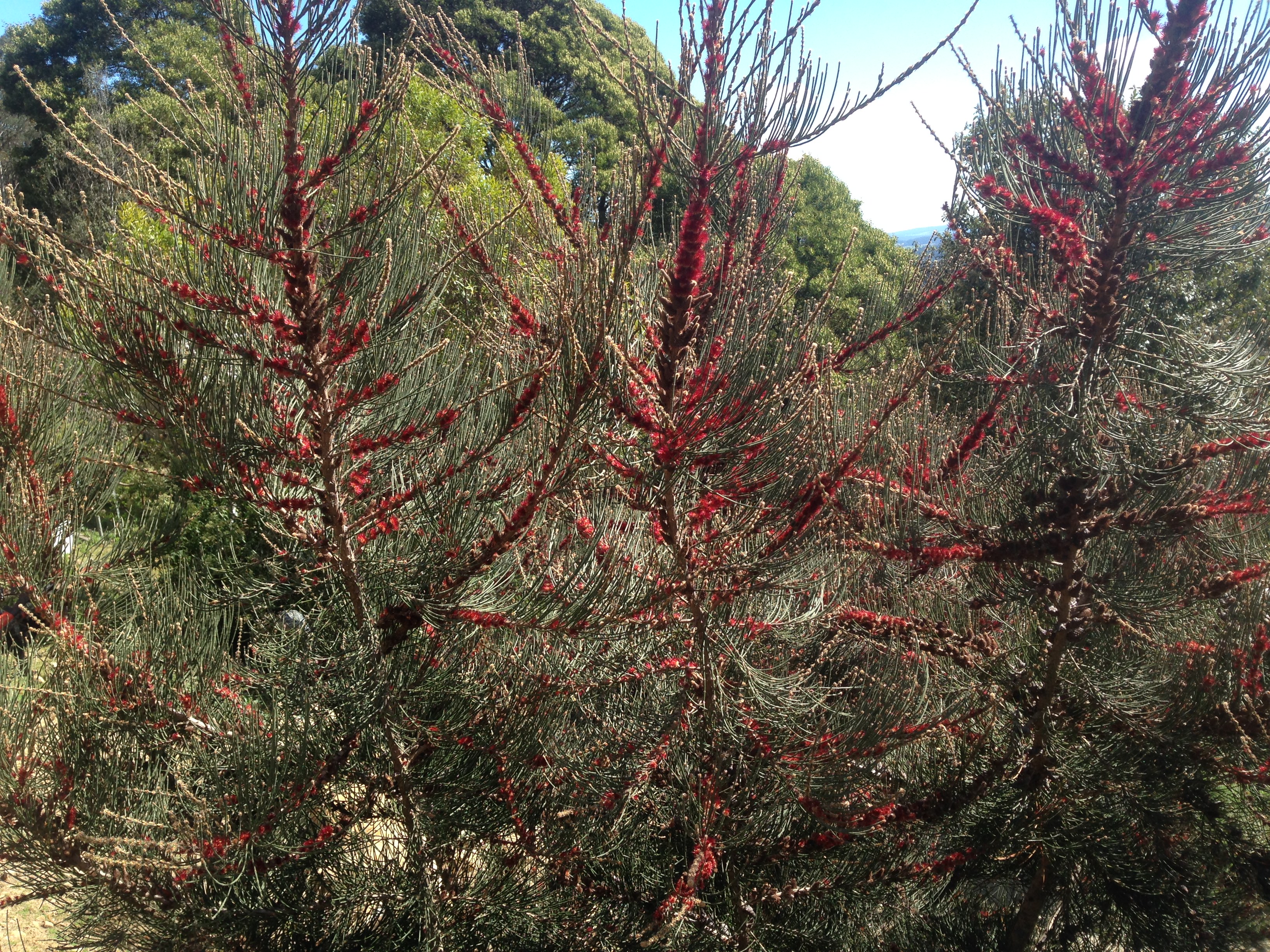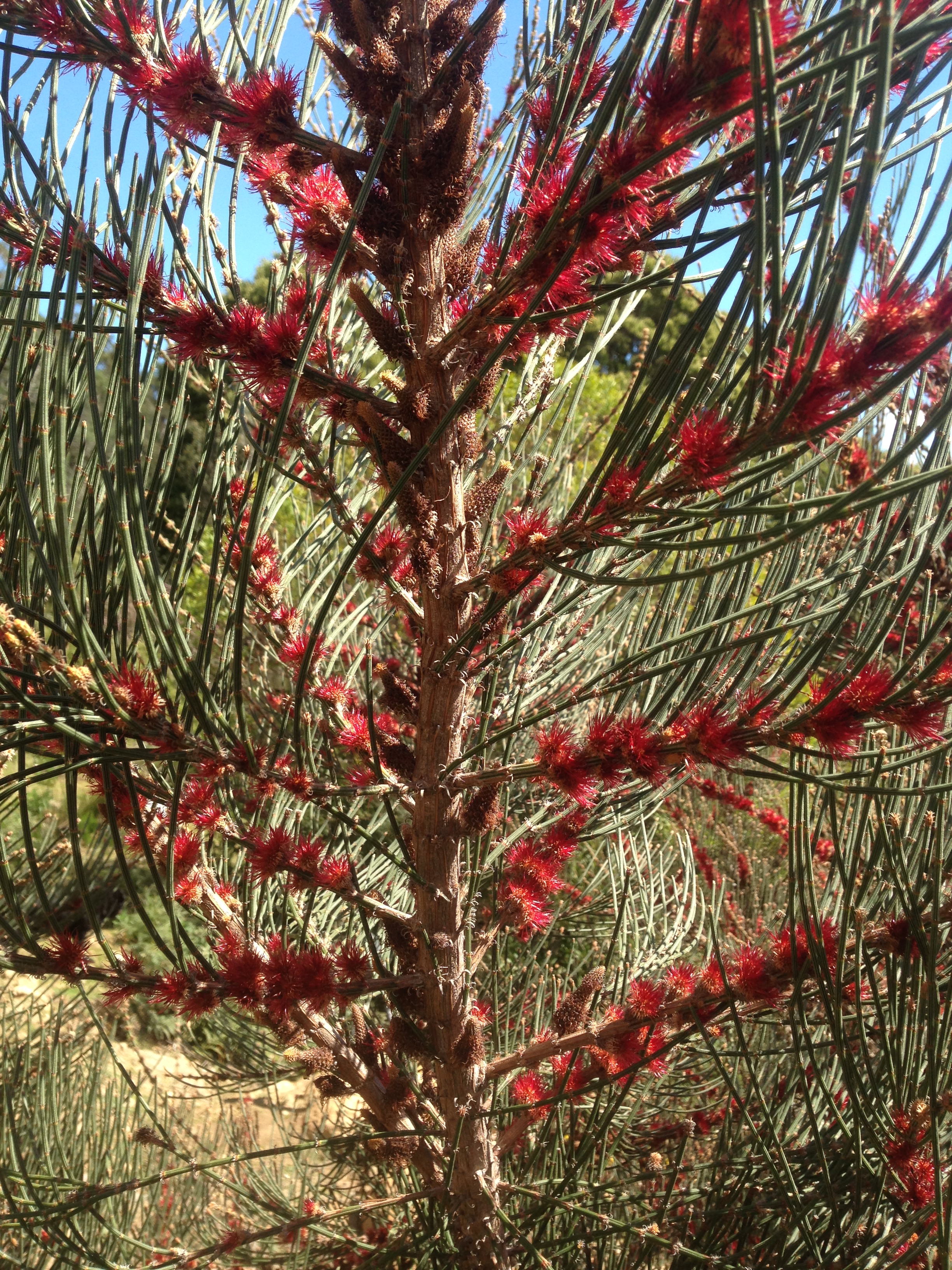Scientific Name: Allocasuarina crassa Endemic Having a natural distribution confined to a particular geographic region
Common Name: cape pillar sheoak
Family Classification (Clade): Eudicots
Family: Casuarinaceae
Threatened Species Status: Rare
Permit: It is an offence to collect, disturb, damage or destroy this species unless under permit.
Form Description: Sprawling shrub
Height (m): 1 – 4
Flowers: Red-brown ‘tufts’ of stigmas.
Fruit: Woody cone. Seed a winged nut in cones.
Municipality
Plant Communities
Habitat Notes
Known only from the Cape Pillar and Tasman Island areas of the Tasman Peninsula.
Site Tolerance
Dry, Exposed, Moist, Rocky, Windy
Soil Tolerance
Nutrient-poor, Sandy, Well-drained
General Notes
crassa’ means thick or stout and refers to the relatively longer, thicker branchlets compared with other species. Bird attracting. Susceptible to browsing by hares and rabbits.
Propagation Calendar
-
Flowering Month
Jan Feb Mar Apr May Jun Jul Aug Sep Oct Nov Dec -
Seed Collecting Month
Jan Feb Mar Apr May Jun Jul Aug Sep Oct Nov Dec -
Sowing Month
Jan Feb Mar Apr May Jun Jul Aug Sep Oct Nov Dec -
Cutting Month
Jan Feb Mar Apr May Jun Jul Aug Sep Oct Nov Dec
Propagation Method
Seed Information
Seed Collection
Pick greyish cones from shrub, dry in paper bags to open. Sieve seed to isolate. Female allocasuarinas often carry ripe or ripening fruit at most times of the year.
Seed Treatment Method
Smoke Smoke treatment improves germination in some species. Smokey products, e.g. smokey vermiculite, can be purchased and applied to the sown seed, or sown seeds can be treated directly with smoke from a source such as a drum with a fire and hose.
Seed Treatment Notes
Seed loses viability quickly once released from the cone. Seed should be sown fresh or stored at 3-5°C to maintain long term viability.
Germination Time
10-45 days
Cutting & Division Information
Can be grown from cuttings of semi-hard wood. Coppice shoots taken from cut stumps or damaged plants will strike readily. Allocasuarinas have a symbiotic relationship with nitrogen-fixing root actinomycetes (Frankia sp). Inoculating potting soil with divots taken from beneath mature plants may be beneficial.

